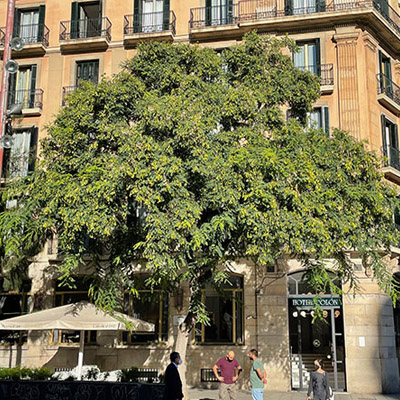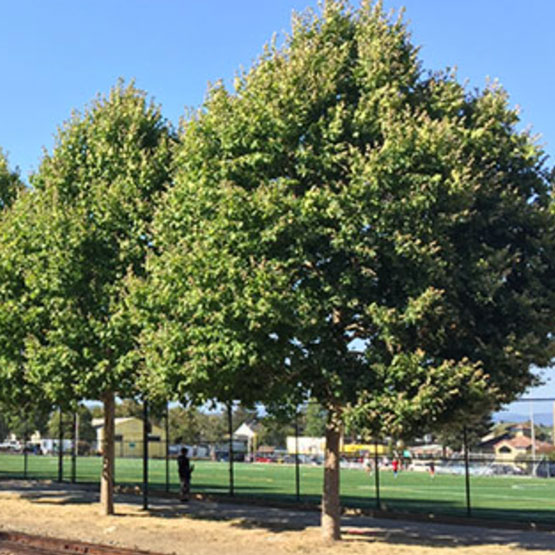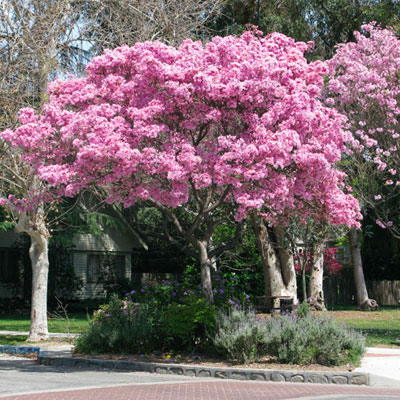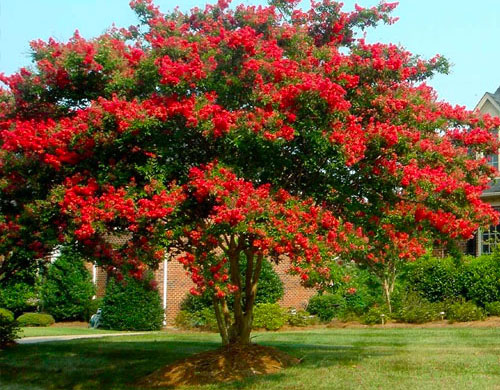The Importance of Trees
A top Altadena Heritage priority is to increase the urban forest and its cooling canopy in our town.
Learn to Select, Plant and Care for Your Trees
We have reached out to tree experts to help us provide a series of workshops and additional information to help residents make the right decisions about choosing, planting and caring for the best trees that suit our climate and contribute most to the cooling and improvement of our environment.

Tree Workshops
Led by tree expert and plant pathologist, Dr. Jerrold Turney
Right Tree, Right Place – Tree Selection and Siting
Pruning and
Tree Care
A Tree Planting Demonstration
Trees NOT to Plant in Southern California – and Why
The following list of trees should not be planted in Southern California due to widespread lethal tree diseases that have no effective treatment. The pests/diseases that are of greatest concern are Bacterial Leaf Scorch and Invasive Shot Hole Bore.
Bacterial Leaf Scorch
Bacterial Leaf Scorch has been present in California for more than 100 years. In 1990 Oleanders started dying and were diagnosed as infected with Xylella fastidiosa in 1993. Soon thereafter Liquidambar styraciflua, Plums, Crape Myrtle and Olive were observed dying and diagnosed as infected with Xylella fastidiosa. Xylella fastidiosa is the causal agent of Bacterial Leaf Scorch. These five hosts are now dying throughout Southern California. Any trees planted will likely die in 5-10 years and have no chance of reaching mature size before they die.
Trees NOT to plant due to Bacterial Leaf Scorch
- Liquidambar
- Olive
- Plum (especially Purple Leaf Plum),
- Crape Myrtle
- Oleander
Invasive Shot Hole Borer (ISHB)
Invasive Shot Hole Borer (ISHB) was first found at Whittier Narrows in Los Angeles County in 2003 but was not identified until several years later.
From 2003-2010 the beetle was found on a few ornamental trees, then in 2010 it was the presumptive cause of the death of a large number of box elder street trees in Long Beach. In 2012 the beetle was collected from a backyard avocado tree in South Gate, and from several tree species at local botanical gardens. It now appears to be established in Los Angeles, Orange, and Riverside Counties and has also spread to selected areas of San Bernardino, Ventura and Santa Barbara Counties. A single beetle was caught in Santa Cruz County in 2014.
The host list for ISHB is now over 60 different tree species. Some hosts are preferred hosts and others are less attractive to the beetle. Preferred hosts of ISHB should not be planted as they will likely die in 5-10 years and never reach mature size before dying. I have observed that all species of Acer (Maple) and Platanus racemosa (Western Sycamore) are highly susceptible and are dying throughout Southern California and should not be planted.
Trees NOT to Plants Due to Likely Death From ISHB
- Acer buergerianum – Trident maple
- Acer macrophyllum – Big leaf maple
- Acer negundo – Box elder
- Parkinsonia aculeata – Palo verde
- Platanus racemosa – California sycamore
- Platanus x hispanica – London plane
- Populus fremontii – Fremont cottonwood
- Populus nigra – Black poplar
- Populus trichocarpa – Black cottonwood
- Quercus lobata – Valley oak
- Quercus robur – English oak
- Ricinus communis – Castorbean
- Salix gooddingii – Black willow
- Salix laevigata – Red willow
- Salix lasiolepis – Arroyo willow
Jerrold Turney Ph.D.
Consultant in Plant Pathology and Arboriculture
ISA Certified Arborist #WC-2364
Pest Control Adviser License #75603

Tree Resources
Altadena Heritage has compiled the following list of online resources to learn more about trees – how to access, select, plant and care for them.

General Information
L.A. County Public Works Call 818-249-3094 or go to websiteto request a parkway tree.
SelecTree, Cal Poly San Luis Obispo – Website
Provides a wealth of information on any particular species of tree.
Tree People – Website
Very active in Los Angeles. This is a great website with lots of information about the Urban Forest, trees, gardening, how to get involved, etc. The DIY section is very good.
California ReLeaf – Website
Provides grants to communities for arbor day events and for large planting projects. They advocate for planting large trees, as those will have a larger impact on climate change and the urban heat island effect. Website has webinars, videos, slide show presentations, newsletter, links to many resources.
California Urban Forests Council – Website
L.A. and Orange Counties Regional Urban Forests Council – Website
Presentations of past seminars available here. Publishes a tree guide.
International Society of Arboriculture – Website
Lots of advice for the tree owner, including how to buy a high-quality tree. Will help you find certified arborists in our area and check their credentials.
Urban Tree Foundation – Website
Research-based advice on tree buying, planting, and care for the professional and the homeowner. See especially this guide: PDF
Tree Care for Birds – Website
Best management practices to protect birds and other wildlife during and beyond nesting season. Good resources page and some great photos.
Selecting the Right Tree
Selecting the Best Site
Tree Planting & Care
CALFIRE Nursery Standards & Specs – PDF

Planting to Protect Against Wildfire
With wild fires such a current issue for Altadena residents, here are some articles to help you plant and care for a more fire resistant landscape.
